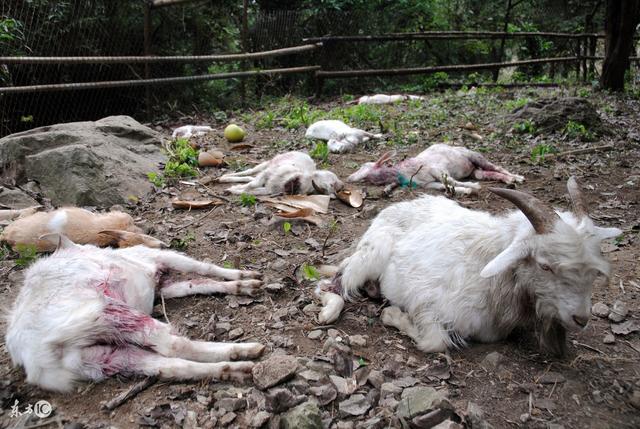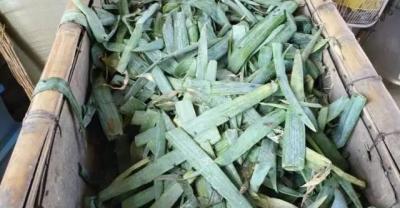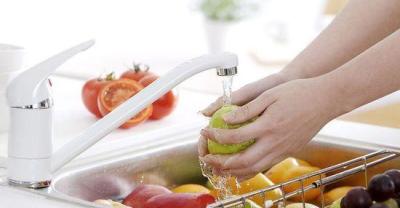Feed the scallions picked up to the sheep, resulting in more than 80 sheep poisoning and death, pesticide poisoning how to do?
Recently, after a sheep farmer in Shouguang, Shandong Province, fed his sheep with scallions, the sheep successively experienced convulsions, foaming at the mouth and other poisoning phenomena. Although they tried their best to save them, they still died of poisoning and suffered serious losses. Afterwards, the staff of the health and quarantine station found organophosphorus pesticides such as phorate and chlorpyrifos in the green onion leaves they fed their sheep, which were highly toxic. And the green onion growers involved were also taken away by the relevant units for investigation; so what are the organophosphorus pesticides? How to treat it in the early stage?

At present, organophosphorus pesticides are the most widely used and efficient insecticides, which can be divided into three categories according to their toxicity, including trichlorfon and malathion in low toxicity, dichlorvos, dimethoate, methyl phosphorus uptake, imidophos and so on. Highly toxic pesticides include parathion, parathion, parathion methyl and so on. Livestock and poultry accidentally ate grass and vegetables sprayed with organophosphorus pesticides, resulting in inhibition of cholinesterase activity, salivation, dyspnea, rapid heartbeat, muscle convulsions, drowsiness, urinary incontinence, foaming and other toxic symptoms.

How to prevent and cure it? First, immediately stop feeding forage or food with pesticides. Atropine (antagonistic to organophosphorus) 0.25 mg / kg body weight in cattle and sheep, 0.5 mg / kg in pigs and dogs, one-time subcutaneous or intramuscular injection, in severe cases, the total amount of atropine can be used by intravenous injection of 1pm and 3 mixed sugar saline, the remaining 2pm or intramuscular injection, and no symptom relief can be seen after 1 hour or 2 hours. Until atropinization (dry mouth, stopping sweating, dilated pupils), use maintenance dose once every 3-4 hours for 1-2 days.

The dosage of phosphatidine (activating cholinesterase activity) is 15 mg / kg body weight, dissolved in 5% glucose saline, injected slowly intravenously, repeated every 2-3 hours, and the dosage is halved until the symptoms are relieved, if the double phosphorus and double phosphorus method are the same. The detoxification effect of parathion on most organophosphorus pesticides is good, but the effect on dichlorvos, trichlorfon, dimethoate and malathion is poor, so it should not be used in combination with alkaline drugs. Double compound phosphorus has a good effect on acute internal phosphorus uptake, phorate, dichlorvos and parathion poisoning, and the method is the same as parathion.

In addition, detoxification measures can be taken to eliminate residual toxicants. Gastric lavage can be done repeatedly with 2%-3% sodium bicarbonate solution, 1% salt water or warm cold water, and finally with activated carbon. It should be noted that trichlorfon poisoning is poisoned with saline or clean water. Alkaline aqueous solution is not suitable; gastric lavage with oxidants such as potassium permanganate and other oxidants is prohibited for parathion and internal phosphorus absorption poisoning, otherwise it will aggravate toxic damage. Finally, glucose solution needs to be injected to increase liver detoxification and kidney detoxification. (the method is for reference only)
Discussion: it is very common to use pesticides to kill insects in the planting industry. how do you think to avoid such tragedies?
Raising chickens: scientists have bred chickens with no feathers, and their egg laying performance has been improved by 15% to 20%!
- Prev

King of pesticides: one of the heroes who can keep the tower, but not many people can play and use it.
Athena has a lot of shields, and breakthrough skills, the general ADC in the later stage of his shield can not be broken, but such a hero is quite unpopular.
- Next

The top five vegetables with the most pesticide residues are all what we often eat!
When it comes to vegetables, we have to say that excessive pesticide residues may affect the development of children and may also cause a decline in human immunity and cause a variety of diseases and vegetables.
Related
- Fuxing push coffee new agricultural production and marketing class: lack of small-scale processing plants
- Jujube rice field leisure farm deep ploughing Yilan for five years to create a space for organic food and play
- Nongyu Farm-A trial of organic papaya for brave women with advanced technology
- Four points for attention in the prevention and control of diseases and insect pests of edible fungi
- How to add nutrient solution to Edible Fungi
- Is there any good way to control edible fungus mites?
- Open Inoculation Technology of Edible Fungi
- Is there any clever way to use fertilizer for edible fungus in winter?
- What agents are used to kill the pathogens of edible fungi in the mushroom shed?
- Rapid drying of Edible Fungi

